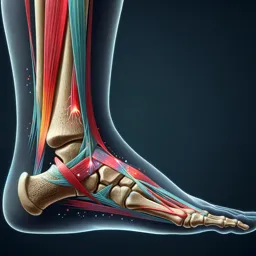Introduction to Sports Injuries
Sports injuries are common occurrences among athletes and fitness enthusiasts of all levels. These injuries can range from minor strains and sprains to more serious conditions like fractures or ligament tears. Understanding the types, causes, prevention strategies, and rehabilitation methods for sports injuries is crucial for a safe and healthy approach to physical activity.
Common Types of Sports Injuries
- Sprains: Partial or complete tears of ligaments, often occurring in ankles, knees, or wrists.
- Strains: Injury to muscles or tendons, frequently affecting the hamstrings, quadriceps, or lower back.
- Fractures: Breaks in bones due to impact or repetitive stress, requiring immediate medical attention.
- Dislocations: Joints forced out of their normal position, commonly seen in shoulders and fingers.
- Tendinitis: Inflammation of tendons from overuse, often affecting the elbow or Achilles tendon.
- Contusions: Bruising from direct blows to muscles or soft tissue.
Causes and Risk Factors
Sports injuries can result from a variety of factors, including:
- Improper technique or form
- Overtraining and inadequate rest
- Poor conditioning or lack of flexibility
- Using inappropriate equipment or footwear
- Accidents or unexpected impacts
Pre-existing health conditions, fatigue, and environmental factors also play roles in increasing the risk of sustaining sports injuries.
Prevention Strategies
- Proper Warm-Up and Cool-Down: Engage in light aerobic exercises and stretching before and after activity to prepare muscles and reduce soreness.
- Use Correct Technique: Learn and maintain proper form for all sports activities to minimize undue stress on joints and muscles.
- Progress Gradually: Increase intensity, duration, and frequency of exercise progressively to allow the body to adapt.
- Wear Appropriate Gear: Use sport-specific protective equipment and ensure footwear fits well and suits the playing surface.
- Listen to Your Body: Stop exercise if you feel pain and avoid pushing through injuries.
Rehabilitation and Recovery
Treatment for sports injuries depends on the type and severity of the injury. Common strategies include:
- R.I.C.E. Method: Rest, Ice, Compression, and Elevation to manage pain and swelling during the initial phases.
- Physiotherapy: Guided exercises, manual therapy, and modalities to restore strength, flexibility, and function.
- Gradual Return to Activity: Follow professional guidelines for a safe transition back to sports, preventing re-injury.
- Medical Intervention: In cases of severe injuries, such as fractures or torn ligaments, surgery and specialized rehabilitation may be required.
Conclusion
Sports injuries are an inherent risk of physical activity, but with awareness and proper management, most can be prevented or effectively treated. Prioritizing prevention strategies and seeking professional care when injured are essential for long-term health and active living.
































